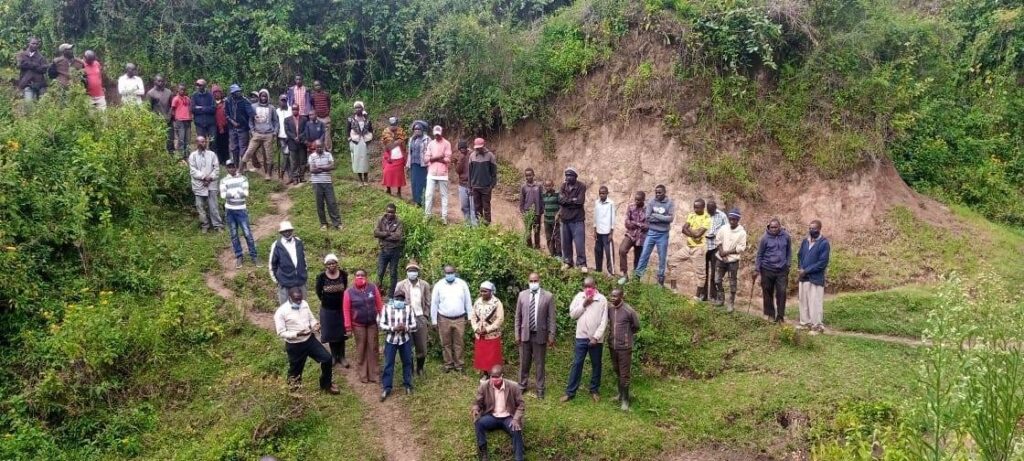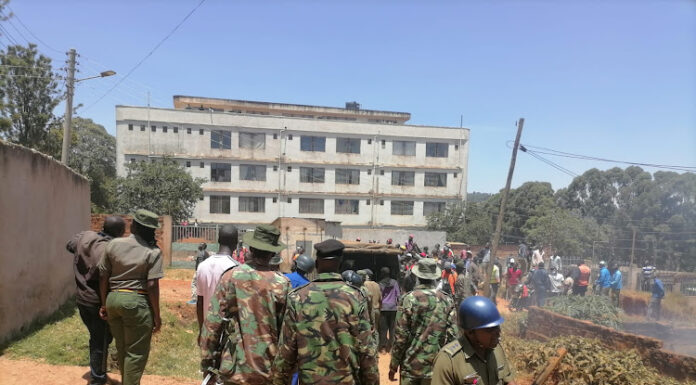
Photograph by Dennis Rasto/KNA.
Nakuru County government is constructing a Sh11 million drying and storage warehouse for farmers at Mauche within Njoro Sub-County.
According to Governor Lee Kinyanjui, the project, to be implemented through joint funding by his administration and the International Fund for Agricultural Development (IFAD), was expected to be completed in six months.
The governor observed that the warehouse, with a capacity of ten thousand 90-kg bags of maize, would be beneficial especially to farmers who have to contend with the destruction of their grains by weevils and aflatoxin.
He said the contractor awarded the tender to build the facility was already on site in the region where maize and millet were grown on a large scale.
The County boss stated that farmers would be delivering their grains at the warehouse for drying and storage before selling them at the market.
Kinyanjui said farmers have incurred heavy losses in the past due to high moisture content of grains and poor storage conditions.
“Farmers have been unable to have their grains dried well and due to high aflatoxin levels, have always registered losses every season,” he said.
According to the Kenya National Bureau of Statistics (KNBS), approximately 35 percent of Kenya’s annual grain production is lost after harvest, primarily due to infestation by weevils and pests, as well as mold and rot which breeds aflatoxin.
The governor said his administration and the community would oversee management of the warehouse that was expected to offer employment to the youth in the county.
County Executive Committee Member for Agriculture Dr. Immaculate Maina said the farmers have been sensitized on the importance of the project and have received it positively.
“Farmers are happy and are supporting this vital project which will even help them get better returns from their produce,” she said.
Dr. Maina said her department was also training smallholder farmers on how to reduce post-harvest losses in maize by 20 per cent by using improved grain storage technology through adoption of hermetic devices such as hermetic plastic bags and plastic and metal silos to store their grains.
A committee comprising of farmers has been set up to manage the project once completed, she added.
“The project is expected to alleviate poverty within the region as farmers can now hoard maize until prices improve. The community should take advantage of available expertise from County government personnel to improve their yields,” stated Dr. Maina.
CEC Maina added that they were aware that some millers and middlemen did not like proper grain storage systems because these structures empowered farmers to bargain for better pay.
“Those who have been taking advantage of farmers by buying at low prices will not be comfortable on realizing that they are getting proper storage facilities,” she noted.
“It is unacceptable that when we are talking about food security farmers have had to sell off their produce to middlemen at throw away prices to curb loses due to lack of storage facilities,” added the CEC.
Dr. Maina said she was looking to a time when heated water from the geothermal wells on the floor of Menengai Crater would be used in grain driers and silos to maintain the required moisture content and storage temperatures.










